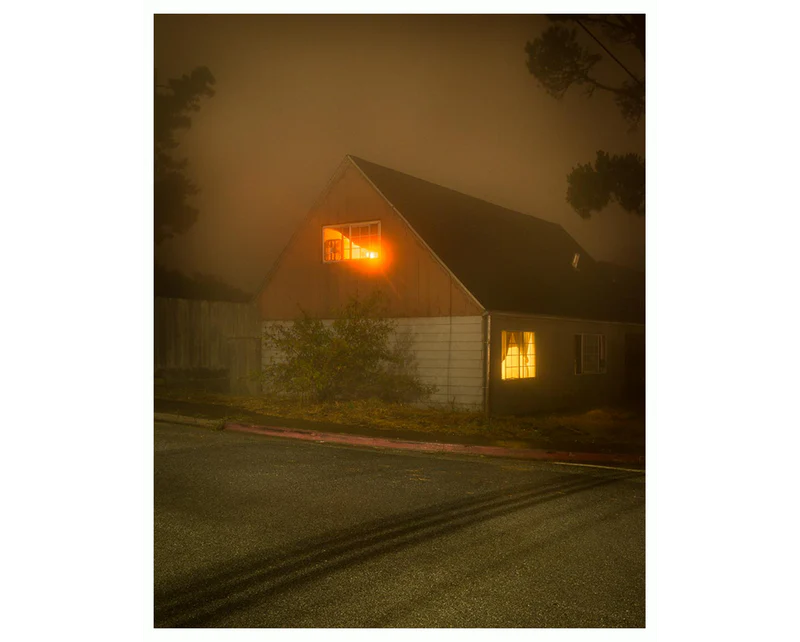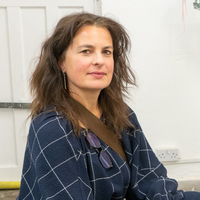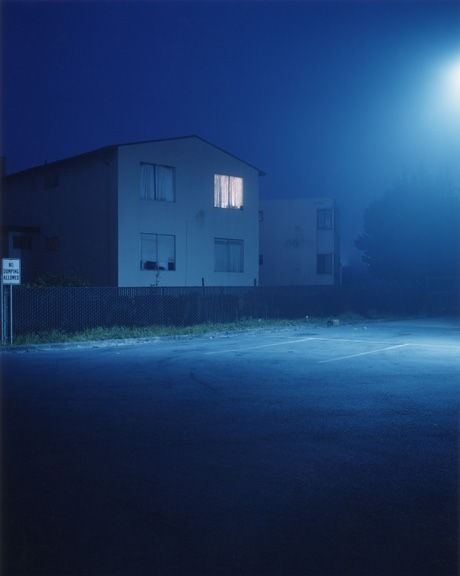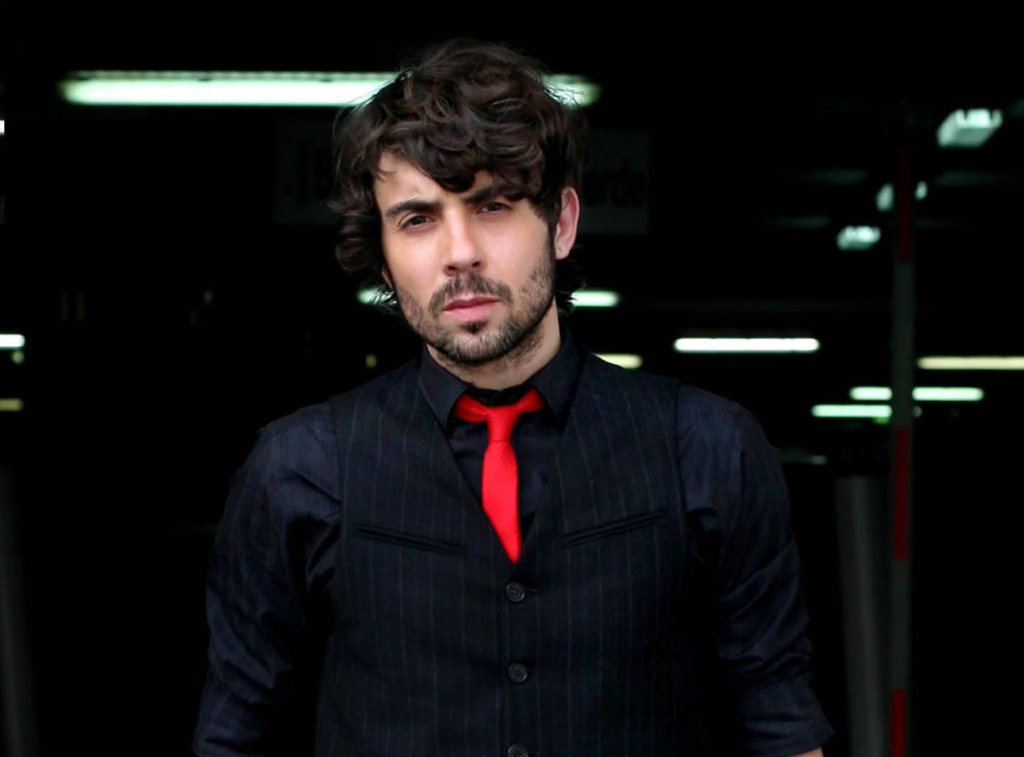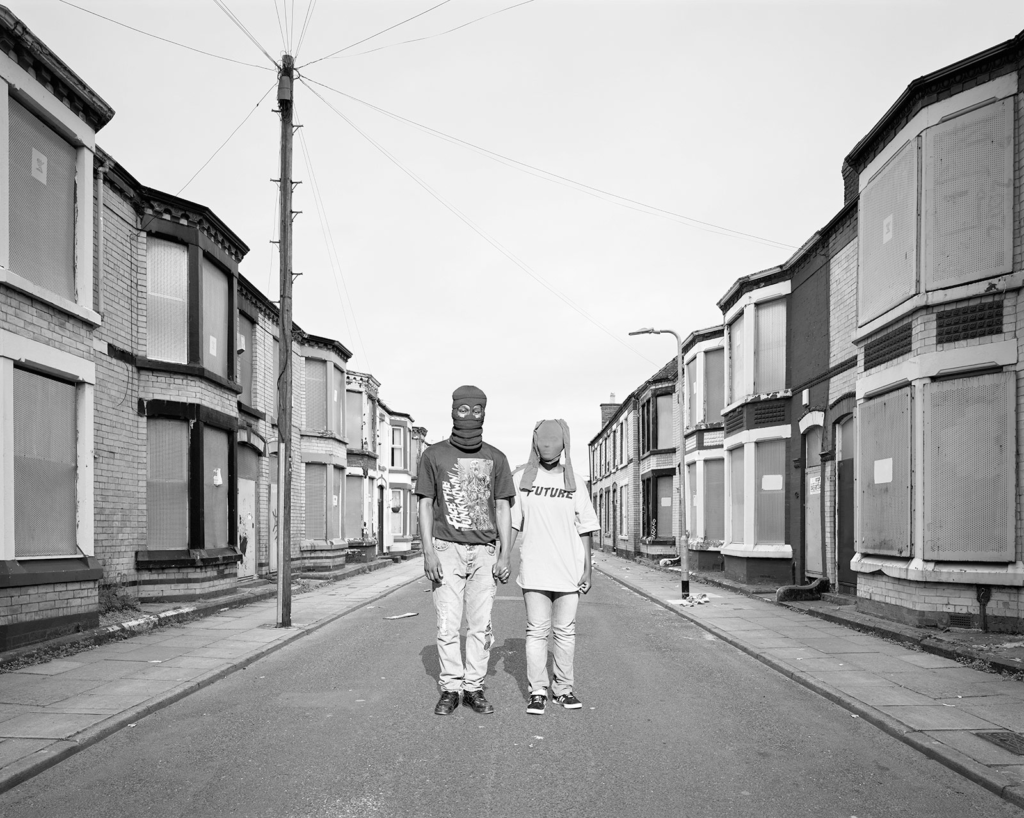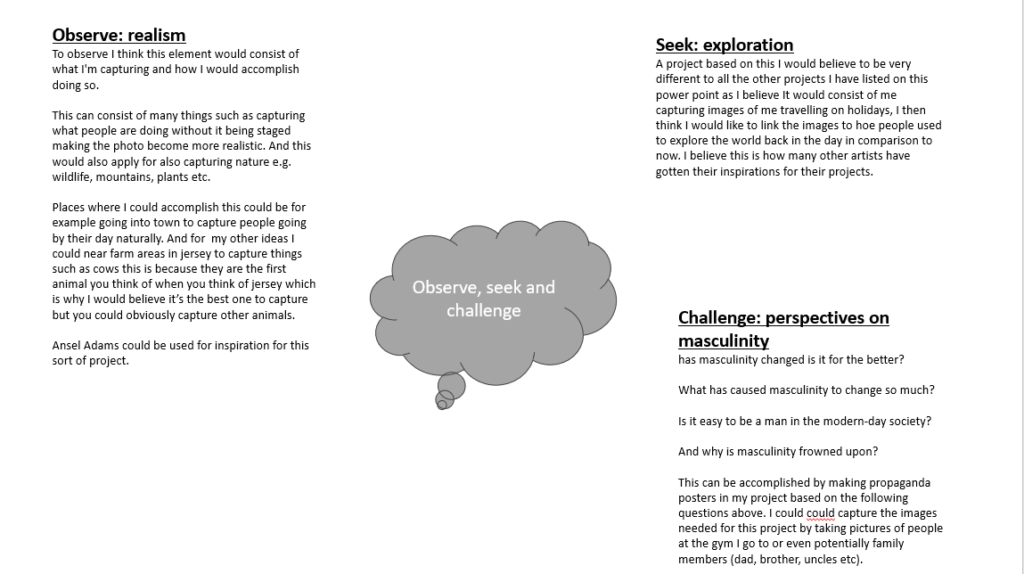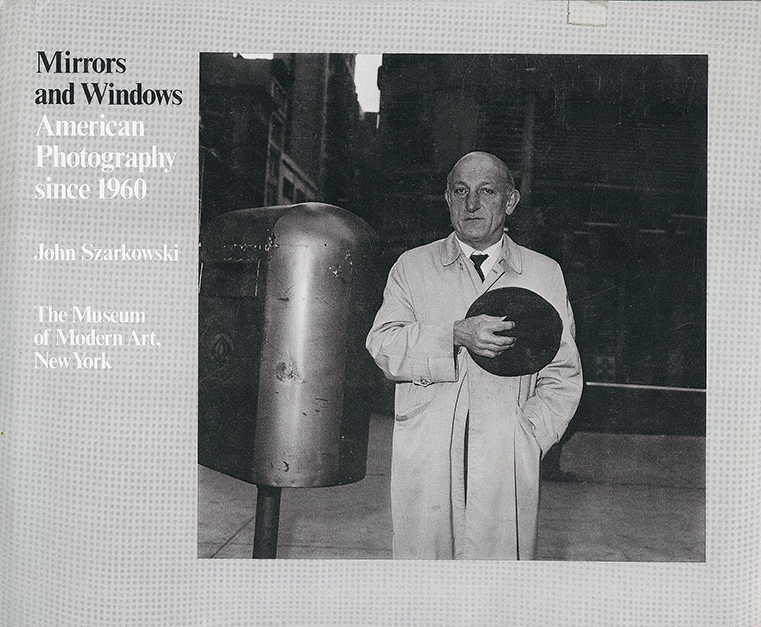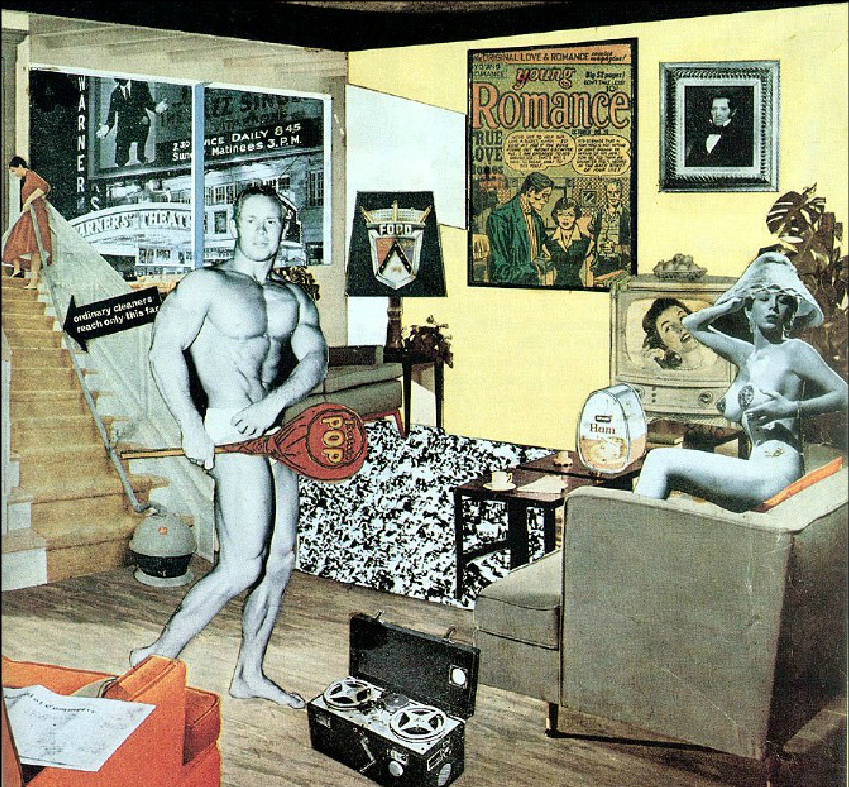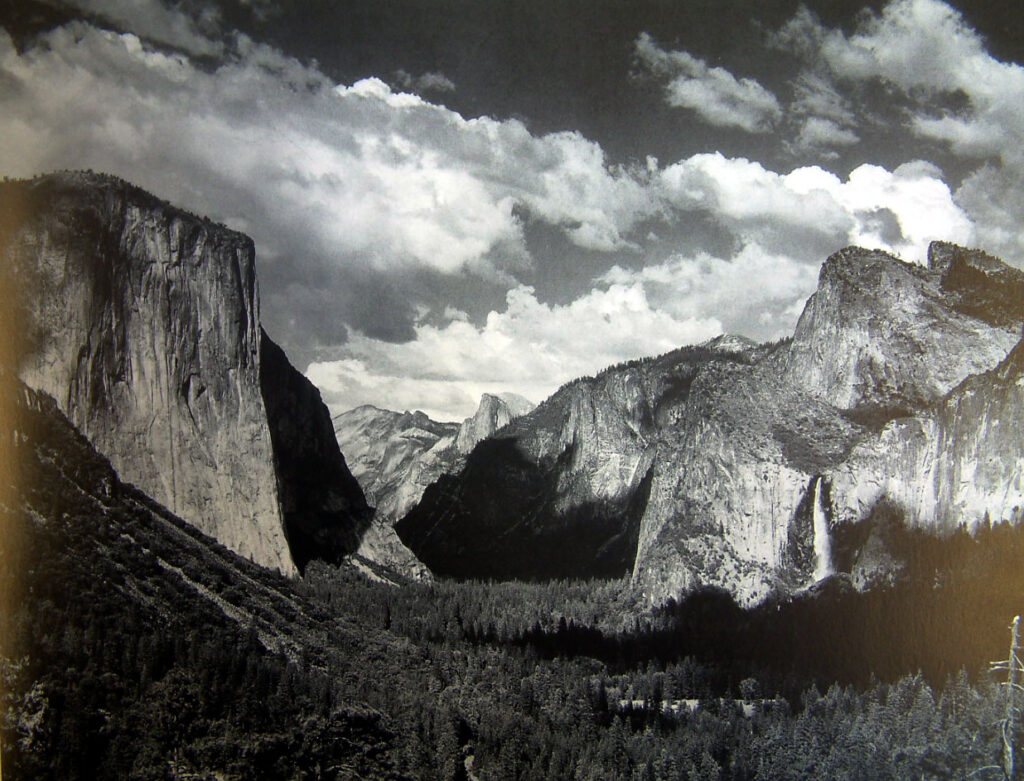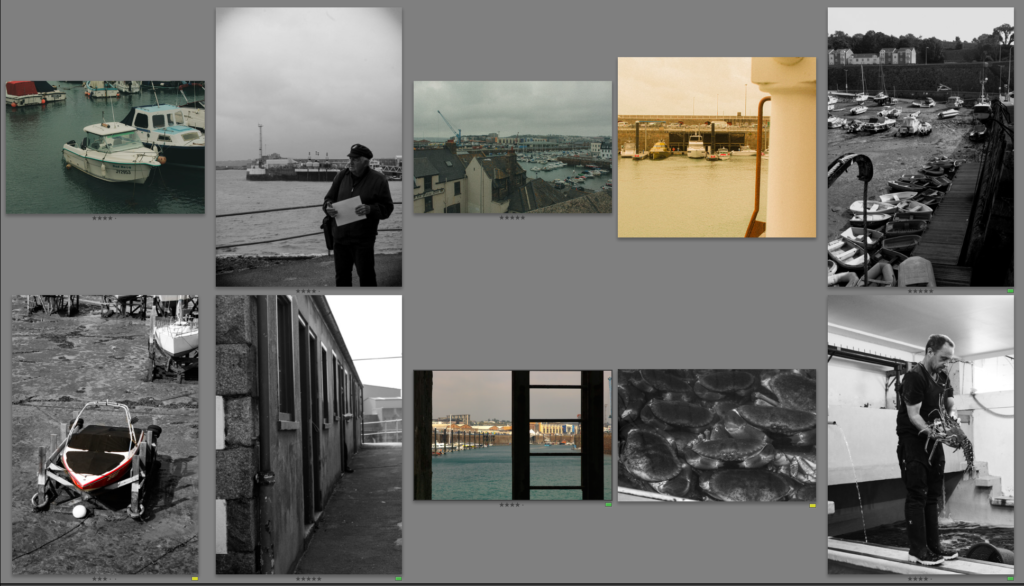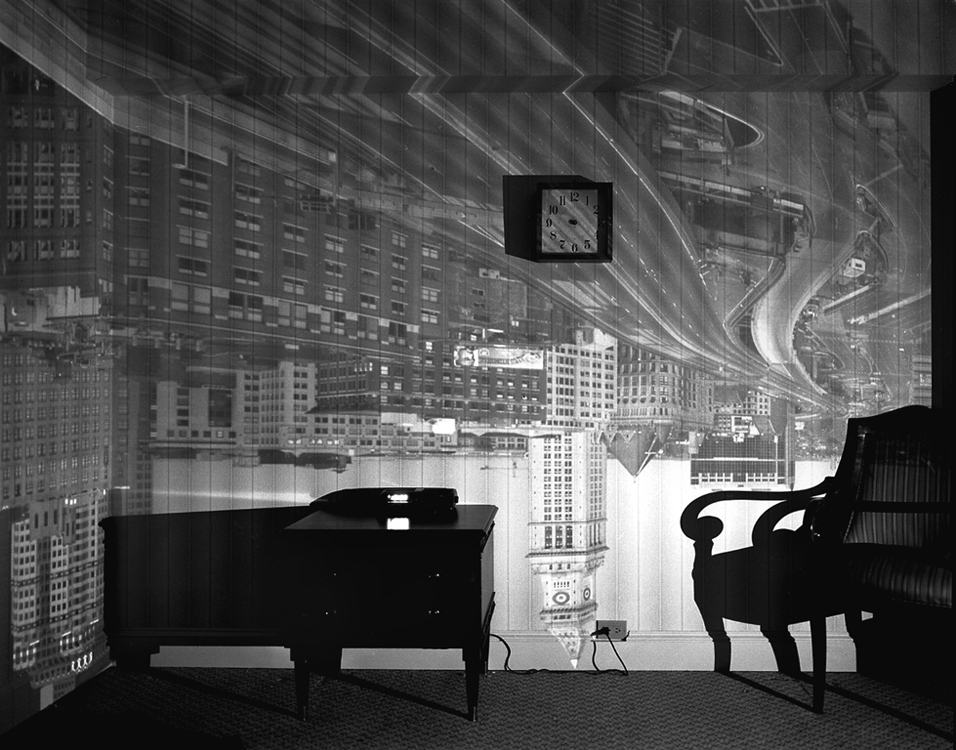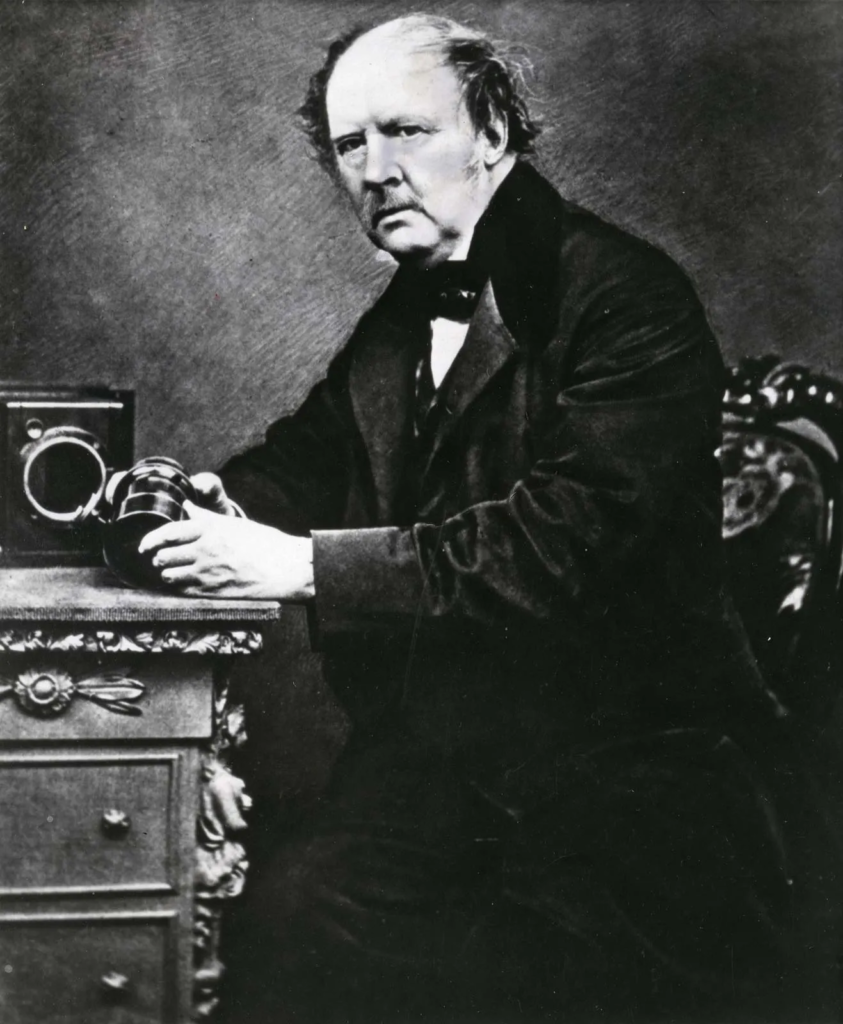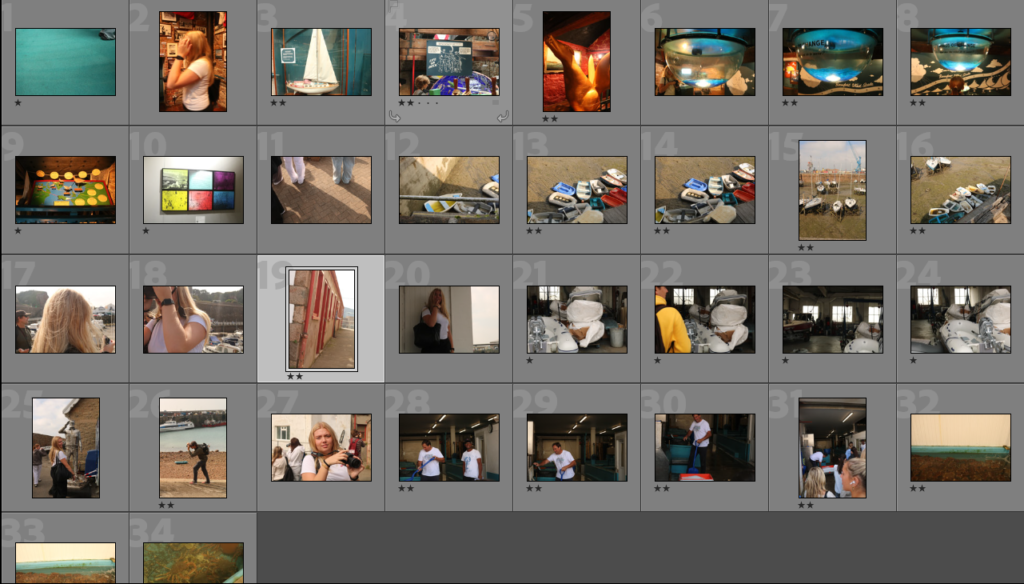- Essay question:
To what extend were the work of Ansel Adams and Robert Adams motivated by their love/ passion/ care/ concern for nature.
Landscape : romanticism to new topographics | 2025 Photography A Level Blog
Colin Pantall Landscape, Power and Climate Change
Adams, R (1996), Beauty in Photography, New York: Aperture
Read chapter 1 of same name
Landscape as Photograph and Photograph as Landscape: The New Topographies
introduction:
the area I will be studying is the change in the landscape around Jersey how has it impacted the way people live and nature itself, and is it for the better? Or the worse? I will be doing this by also studying artist such as Ansel Adams and Robert Adams, and the reason I chose these artists is because i also share a similar that they believed in which was their interest in protecting the natural beauty of the landscapes around them. i will analyze the work of both Robert Adams and Ansel Adams by compering the twos work side by side and discussing their meaning and motivation for creating their images, and also dive into the methods and meaning behind their images. I’m going to respond to their work by creating my own images with inspiration of their work and using techniques they used such as the zone system and using techniques I want to experiment using some other techniques such as long exposure. The artists I’ve studied will obviously point me in a direction of what I want my outcomes to look like and the idea behind the images, however I want to produce a unique project with my own style of images using techniques I have learnt while studying photography the most notable project I’m referring would be the past landscape projects I have done Anthropocene, and romanticism, these projects helped me learn the zonal method of Ansel Adams and also the framing and composition in an image. So what will this help me achieve? this will help me achieve the best end results possible with what I want to achieve which would be an image that has a similar atmosphere to that of Robert Adams and Ansel Adams imagery which would consist of an image being most likely in black and white (doesn’t have to be) to help create contrasting tones and an interplay of light and shadow, and to create the sense of emptiness and understanding of Robert Adams images.
through these different interpretations of capturing environments, I believe it will help me explore the subject more in depth as I have two different perspectives to look from. for my project I will like to recreate the images of certain photobooks from both Robert Adams and Ansel Adams that corollate to each other in one photobook so I will be able to tell a narrative that makes sense and isn’t all over the place. The aesthetic that both of the photographers that I studied are quite similar and the story they are trying to tell are also quite similar but also have there own different techniques and styles which I will try to merge and incorporate in my work.
paragraph 1:
what was Ansel Adams motivation behind his photography? Ansel Adam’s motivation behind his photography was the fact that he was an activist for the cause of the environment and wildlife, to add to this he attended multiple meetings and wrote thousands of letters to newspapers in support of what he stood for he wrote to politicians, government bureaucrats and newspaper editors. This all had to do with his philosophy which was environmental conservation hence why he always took photographs of the wild and nature. the significance that Ansel Adams left was immense as helped pave the way for photography in America and the conservation movement was major as he he helped get photography looked at in a different way as they were started to be put along side paintings and portraiture in exhibitions in national gallery’s. Group f/64 was a group of photographers that Ansel Adams was apart of that all shared a similar style of photography which was photos that were sharply focused and carefully framed which led to the development of the zonal system that Ansel Adams I widely known for. how did Ansel Adams develop the zonal system and why? The reason why Ansel Adams wanted to develop the zonal system was so he could evaluate the exposure on his photographs, this would then lead him to place certain tones in certain places and it would also help him calculate whether tones would be to bright or to dark in certain scenes, which he could then adjust the exposure if it was necessary to prevent extreme contrast in his photographs. this was done by looking at “zones” of the image with the zones being 0 all the way to X zero being pure black and ten being Pure white such as light sources and reflections with everything on the lower end being darker shades and lighter shades on the higher end.

technical:
lighting: When we are looking at this image we can see that it has natural lighting just by looking of the environment in the image, we can also see that the level of control throughout the image is second to none as Ansel Adams was very good at utilizing his zonal system with shades such as white and black appearing where they should and not overpowering the image.
aperture: The lens this image uses has exceptional sharpness and clarity to help capture the detail and depth the photo has this could have been a variety of cameras that Ansel Adams uses as they all did very similar things, all of this helped Ansel Adams capture the wilderness to the best of his ability’s linking to romanticism as he would glorify the wilderness and nature whenever he possibly could.
shutter speed: this image seem to be under exposed as the black parts in the image seem to be very dark an the white and gray parts don’t seem to be that bright when comparing them to some of his other images, however on the contrary the less vocal points of the image such as the terrain on the right side of the image appears to be much lighter the the other parts in the image and the same can be said for the stream of water we see in the middle of the image.
white balance: this image appears to be very cold which suits the image due to it being a picture of a mountain with visible snow at the tips of the top of it. it could also be said that the color accuracy is consistent throughout the image due to it being in black and white.
Visual:
the visual elements we see in this image would consist of the following: black and white for the color, consistent dark tones with hints of light tones throughout the image with a 3D shape as we are able to see the around the surface of the image it isn’t just a flat image.
composition: this photo provides us with a a high up view point from what appears to be a high up foot path. when looking at the zone system we can see a lot of the image provides us with zones I to III due to the amount of black in the image, however there is also a few grey meaning zones such as IV to V have also been used frequently throughout the image providing a good amount of contrast at a first glance at the photo
contextual:
the added value we can add to this image that is the fact that Ansel Adams wasn’t just someone capturing images of a mountain for the sake of it, he took pictures of nature as a symbol of wilderness conservation as he believed these historic sites in the US weren’t being taken care of properly and wanted to make sure that they would stand for generations for millions of people to see for the foreseeable future. making his images are a powerful blend of art and an environmental movement.
conceptual:
A concept/art movement that Ansel Adams could have taken inspiration from is Romanticism this is because the whole idea behind romanticism is to emphasize emotion, individualism, and the glorification of nature which of these topics link to his photos and the context behind them. This is because Ansel Adams work is all about glorifying nature as he wanted to persuade people to preserve nature as much as possible, and their is emotion to all his images as he wanted to convey a sense of depth and spirituality as a symbol to save the wilderness and nature all tying back to the theme of Romanticism.
paragraph 2:
Robert Adams motivation behind his work was to document the damage that had occurred in the American West with both the reason of despair and hope his end goal with his projects were quote “to face the facts but to find a basis for hope” meaning he wanted his work to help show people the damage that had been done but show that it can still be salvaged. after doing research Its quite apparent that Robert Adams wasn’t the most technical photographer I’ve ever studied and didn’t really care for all these methods that all these other photographer did. He was much more raw than other photographers as he was simply a man travelling taking pictures of what he sees. He also believes he doesn’t have a “style” as his goal “isn’t to make a fashion statement or an investment opportunity” for him he believes his “style” is respect as he just respects the American west that he believes that is being destroyed by human arrogance. like i stated earlier he is a very raw photographer and never took any images through an editing process which could be apart of his “methods”. and you can see this through his images as they definitely be edited to be more appealing to majority of people as they are either very bright or very dark due to no editing being done to his images, however when looking at the information I’ve told you this suits what he is trying to convey to people as he wants to show the harsh reality of what people had done to the American west. His work had lead to him being involved in an exhibition in 1975 known as the New Topographics: Photographs of a Man-Altered Landscape, this helped pave the way for the future of photography as it present a new way of capturing landscape photography with a new aesthetic that hadn’t been seen before with a meaning that caught peoples attention. this helped change the approach to landscape photography to photograph landscapes that weren’t seen as desirable to take pictures of such as industrial landscapes, suburban sprawl, and everyday scenes.

this photo consists of the typical Robert Adams aesthetic an over exposed picture of the American west with bright day light over powering the image creating visible shadows in the image. this image was used with a 35 mm camera which is known for being very reliable to capture photos with a wide angle feel. its not got a high sensitivity as the image doesn’t appear to have that much grain the image doesn’t consist of much contrast as it all appears to be grey and white in the image with just a hint of black. The temperature of the image is very cold as there is lots of white and grey due to it being black and white not providing any color to make the image give any warmth atmosphere.
the visual elements in the image are very bland as it consist of shades of white and grey meaning the its mainly just bright tones in the image. The composition in the image seems to be very straight forward as there isn’t much contrast in the image and you have a viewpoint that isn’t that interesting. However all this being said these images aren’t supposed to blow you out the park and amaze you as the whole point behind Robert Adams work is to show you raw images of the effects that the American population has done to the West.
conclusion:
in conclusion Robert and Ansel Adams share significant simlarites on how they helped contribute to photography, especially in terms of capturing landscapes and also helping people understand how to combat against the damage people had done to the American landscape through their work. however both photographers did it in different eras with different meaning behind their projects. For example Ansel Adams wanted created images that glorified the American wests nature especially Yosemite National Park. This helped push photography to new heights as it was seen as fine art that was respected by the majority of public, this also includes his development of the zone system to control exposure and contrast which would help to create many of iconic images. this meant that he could then better capture the wilderness that he believed held such importance, this would be done as an attempt to get people talking about natural landscapes and how they can keep them pristine. And then on The other hand Robert Adams was a man who just wanted to capture the suburban development in the American west, with a more critical lens he provided a much more subdued and contemplative vision on the damage people had been causing on the west. in comparison Ansel Adams wanted to do the opposite to preserve nature not to show how it had been hindered to persuade people to want to take care of it with his images not how it had been changed. despite both their differences they both were able to use photography successfully to benefit the environment as they were able to make people see the issues that they can be presented in the future. with an ever lasting legacy that still effects modern day photographers. I used there styles to create images fairly similar but to look a bit more modern as I didn’t want to just stick to making black and white images to I made more saturated and colourful images to emphases things such as lights and cars and modern things we have all used to damage the environment in many of different ways.




